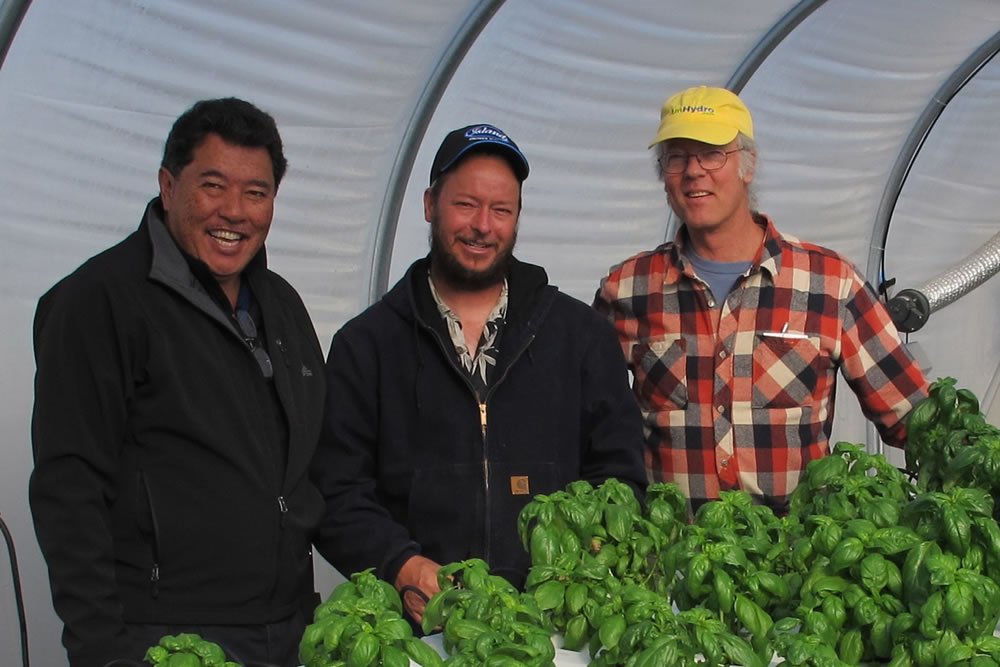
In a partnership with commercial greenhouse manufacturer, Agra Tech, Inc., American Hydroponics works closely together to enable and train its growers worldwide, so that they can grow vegetables in greenhouse environments. We sat down with Michael Christian, the president of American Hydroponics recently to discuss the growing business of growing vegetables in greenhouses and using his company’s hydroponic systems.
The main reason is that people would rather buy localized food production, and different environments have different constraints. You cannot grow food in St. Paul, Minnesota, for example, during the winter, but if you have a greenhouse you definitely can. Greenhouses mitigate environmental restraints and allow people to grow food pretty much anywhere in the country. Someone can grow large amounts of food in a 10,000-square foot greenhouse, for example, that a localized market will consume rather quickly. If you can keep the quality of the food high people are usually willing to pay the price for better food. So, even in places like Minnesota, our growers are still getting ROI in 1.5 to 2 years. They’re making their money back on their initial investment that quickly.
Any vegetable that can be shipped is not a good match for these small greenhouse business models. It’s difficult to convince local markets to buy your produce, because the prices on tomatoes, for example, are too low to compete with local greenhouse growers. It’s not worth it, because tomatoes are always pouring in from Canada and Mexico and they’re so cheap. That’s why it’s hard to do well with tomatoes, peppers and cucumbers. Herbs, lettuce and leafy greens are a much better product to produce, because they do not ship easily. So it fetches a much better price at the market, because it’s in pristine condition when it gets there. Arugula, basil, spinach, kale, watercress, chives and different types of parsley are very popular. They are much more in demand and you can charge more.
Lack of knowledge is the main one. If an inexperienced grower doesn’t have the guidance that is necessary during that first year, it’s difficult to succeed. You have to pretty much expect that everything is going to go wrong, and that’s why you need a backup in place that can handle it. For the first year, we work intensely with our growers so that they really get it. You also have to keep the quality and consistency high, so that your markets will stay loyal to you, even when competing prices are lower at times. You need to stay on top of all the variables. “Every plant every day” is what we say. We train people so that they’re prepared for just anything they could encounter. A lot of people try to build their own systems, but after failing a few times, they come to us and start over again. All of the training and knowledge we impart does not cost the grower anything, because we build it into the cost of our systems. We assist every grower we work with, because we can’t afford anyone to fail. Our success rate is 95-98%, so we set them up for success. It’s a relationship we build with the grower and they get our first year as part of the deal. We must have hundreds of growers throughout the world using our systems and making money.
The first step is to locate the market and provide what they want so the first thing is to determine that. Then, certain markets may want it packaged in a certain way, which is important. We train people how to view the market and make their own determinations. Each region is different and each market has its own needs. We tell our growers to build loyalty with your markets, so that when the competitors’ prices go down during the winter, they will still pay your price, because they don’t want to lose you.

Michael Christian and John Pound

Michael Christian with a big trout!
Written by Ed Attanasio
TrustED Advertising
Published on:
05/22/2013
Post by:
Admin
Category:
Greenhouse Accessories
Greenhouses
Tag(s):
#Agra Tech
#American Hydroponics
#Greenhouse environments
#Greenhouse farmers
#Greenhouse farming
#Greenhouse growers
#Growing vegetables
#Hydroponics
#Hydroponic systems
#Michael Christian
It was a pleasure to speak with you today about our order for 10 Thermolator 30 Code Greenhouses today. As I mentioned on the phone, we LOVE your houses. We have looked at other models over the years, but nothing comes close to the Thermolator 30 in structural intregity and durability. This is very important in our climate, where wet, heavy snows have knocked down lesser houses in our nursery, before we began buying your products approximately 20 years ago.
Read article: Prairie Nursery
Prairie Nursery, Inc.
Neil Diboll
Westfield, WI